Reefer Madness
I have a stack of Branchline Trains billboard reefer cars that I have purchased over the years. Every once and a while I like to pull one out and spend a couple evenings assembing it. They build up into great looking cars, with lots of detail.
They take a bit of effort to assemble though, lots of little bits and pieces that have to handled with care. I have seen lots of these cars with stuff missing, I guess the guy building it gave up. With a bit of perseverance, they sure look good.
I weathered this car with an overspray of weathered black and finished it off with some chalks. When it was complete I was a bit concerned I had over done it. Just how dirty railroad equipment in the steam era actually got is always a hot topic for debate on the forums.
My opinion has always been anything goes. All dirty cars were once clean, all clean cars will eventually get dirty, so I plan to have a mix of both on the layout, from showroom clean, to one heartbeat away from the scrapyard.
I did a bit of hunting around online and found a bunch of similar cars from old 1940 Jack Delano photographs. I cropped them a bit to just show the cars.
This great shot shows a good collection of what the roofs of rolling stock would look like. Everything from fairly clean, to solid soot. Who says roofs didn’t get covered with soot. (a common statement)
The newer boards on the roofwalks is a good touch.
Lots of vertical streaking, which makes sense as rain mixed with coal dust would make quite a mess.
Right out of a model railroad! I like the reefer second from the left. This is very easy to duplicate with an airbrush and just about any brown paint. A light dusting in the spraybooth will create exactly this effect.
Another good shot of a dirty reefer. This look is duplicated on most weathered equipment, and occasionally gets criticized as a technique that is unorginial. A common complaint is that modelers often build models of models, and not the real thing, and a car with dust on the end from the wheels is often criticized, but here is a good example of just that effect.
This car would be easy to duplicate with a simple wash and some chalk.
Cars of this era, being made mostly of wood, are fairly easy to weather. Simple washes or an overspray to dull down the colour and a few streaks just about does it. Unlike their modern counterparts, there is no graffiti…
A common feature on cars of this era are white streaks from the roof down the side of the car. Not sure what caused it, likely a vareity of things over the years. Again, easy to duplicate with weathering chalks.
Amongst all that grime, one, bright clean car.
The two yellow reefers, at the middle right side of the picture look exactly like a car I weathered several years back. I was never happy with the weathering job I did, I always thought it was overdone, but seeing this image I think it might have been just right.
About the only grafitti (if you want to call it that) on vintage equipment would be simple chalk marks left by the brakemen, used to identify cars on switchlists.
This car was half built last weekend, and I wanted to finish it off today and give it a light weathering.
Yesterday I made up a simple wheel painting jig, similar to one I saw online somewhere. These things work great for painting the wheels and keep the paint off of the treads. It also allows for painting the back of the wheel and the axles.
Paint will get on the ends of the axles and has to be cleaned off otherwise the wheels will not roll as they should. This is easily done with a Q-Tip soaked in lacquer thinner.
I stuck some old wheels into the trucks to keep paint out of the journals while being painted. Here they are getting a coat of Railroad Tie Brown (Floquil).
The bottom of the car is also given a coat of the same paint. This is a nice dirty colour and works well for the bottom of rolling stock.
Needs some dirty.
I printed out one of the pictures from above, to keep handy when weathering. I am not trying to duplicate it exactly, just to capture the look. Truth is, I would love to duplicate it exactly, but I can’t…
To keep the car from getting too dirty, I decided to do the weathering with washes instead of an overspray with the airbrush. The wash is a mix of black leather dye and rubbing alcohol. The entire car is given a coat first, then when slightly dry I add some vertical streaking and dark areas along the bottom of the car.
Layers of dirt are built up with consecutive washes of dye.
Other than the washes, and a small amount of chalk, that is all I did to this car. I was trying to not get it too dirty, which I find quite hard to do.
These turned out good enough, but it isn’t my best work. Perhaps I will work at it a bit more later. Or not.
-T.
About the Author:
I'm your host, Tim Warris, a product developer in Port Dover, Ontario. Since March of 2007 I have been documenting the construction of the former CNJ Bronx Terminal in HO scale. For my day job, I design track building tools for Fast Tracks, a small company I own and operate. Fast Tracks makes it fast and easy to hand lay your own trackwork. Stop by our website to learn more!
Posted by: Tim | 02-08-2009 | 09:02 PM
Posted in: Latest Posts | Weathering
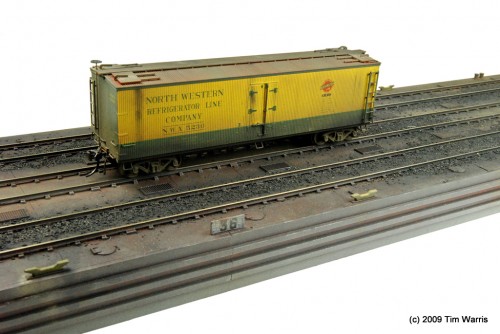
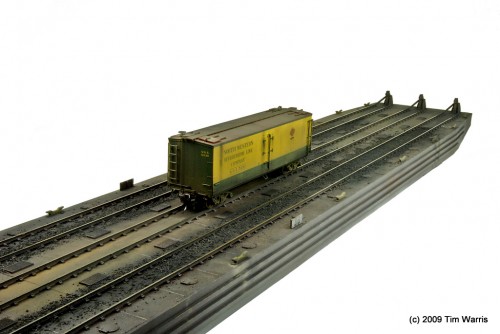
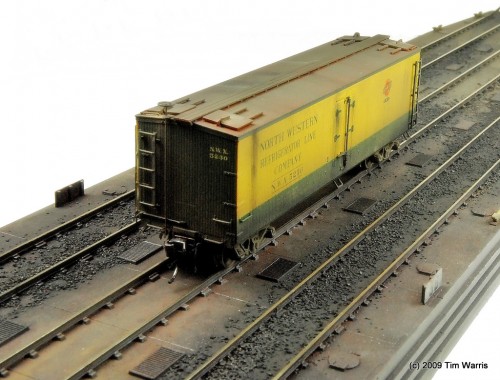
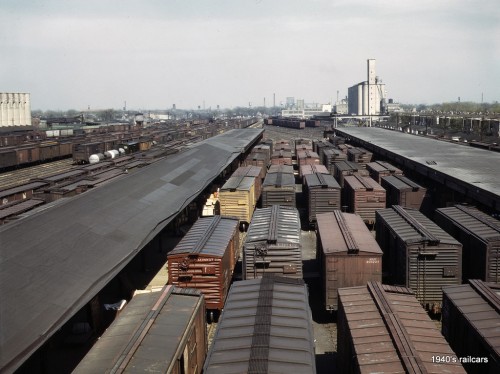
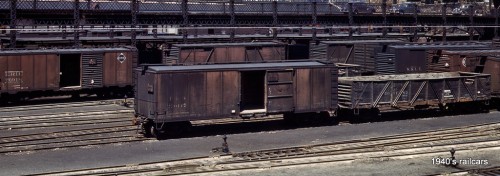

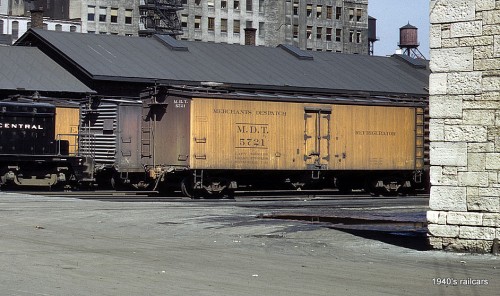
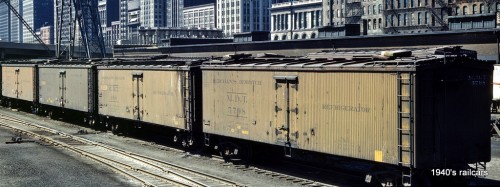

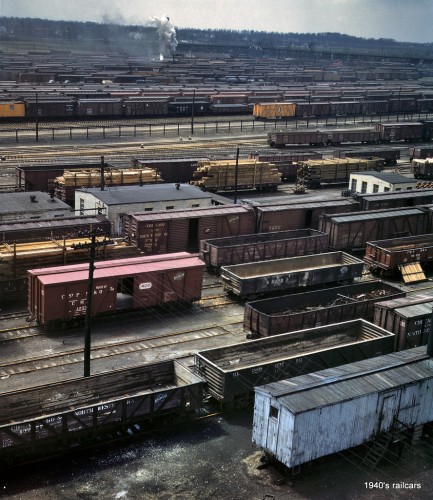
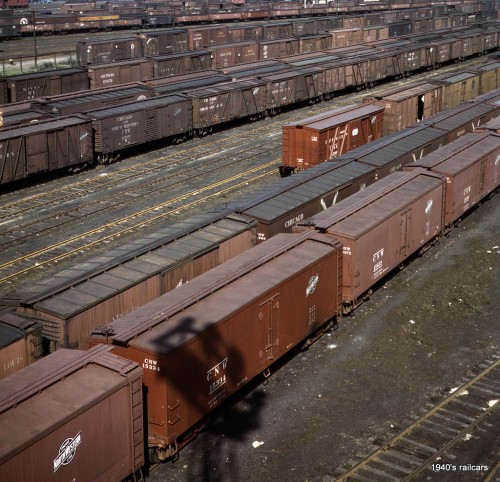
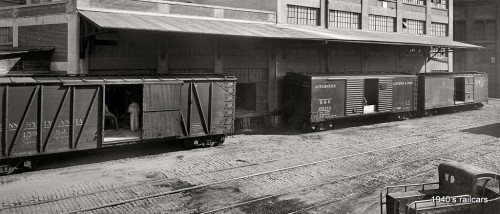
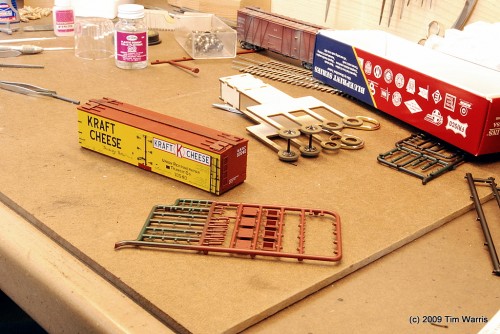
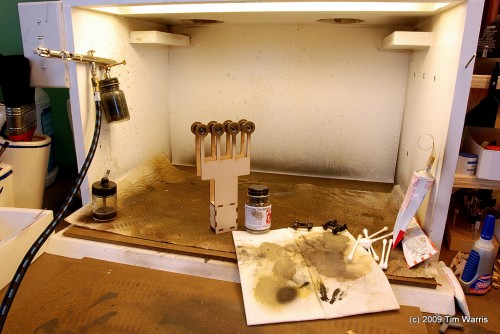
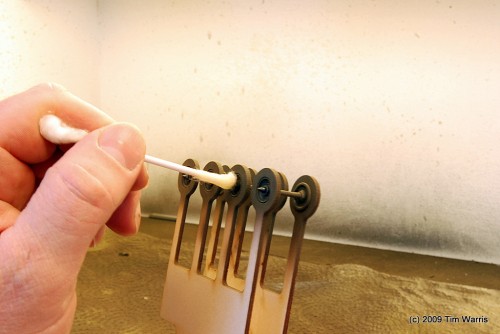
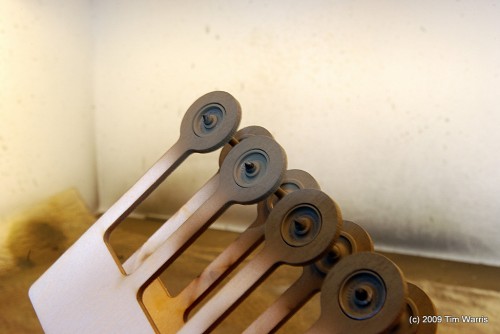
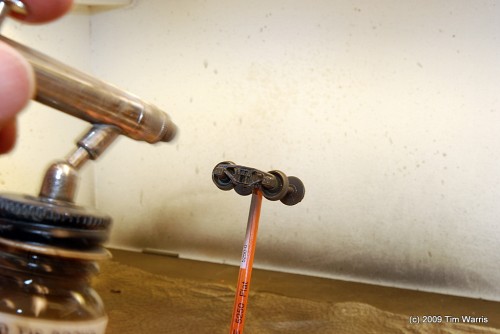
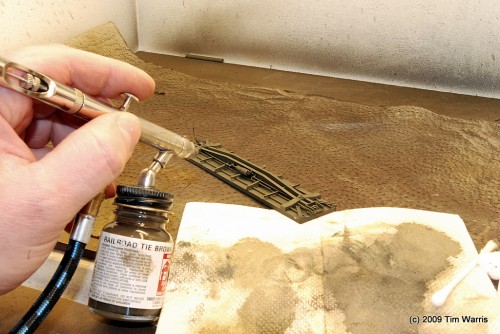
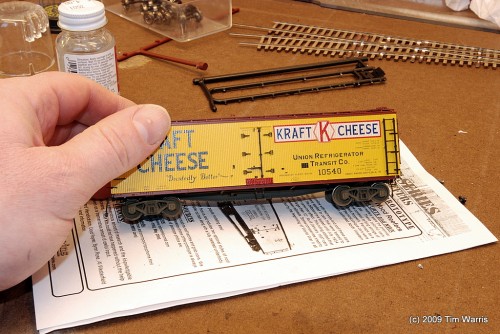
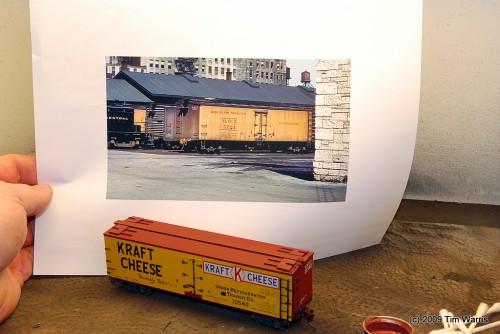
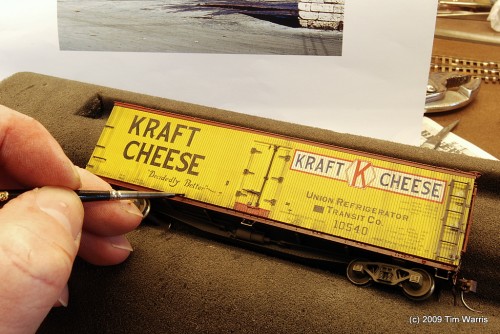
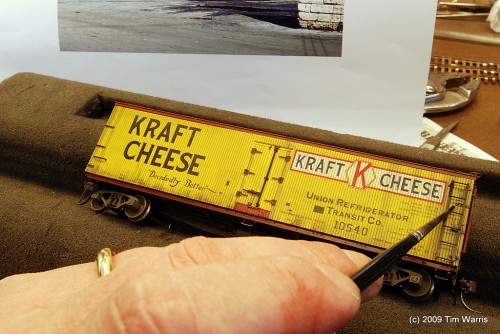
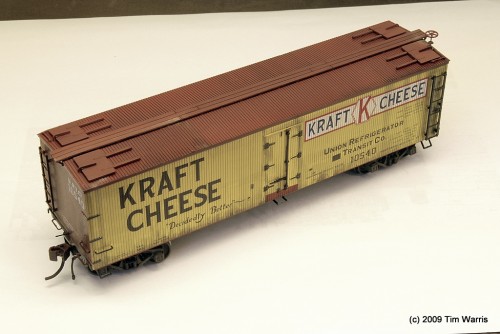
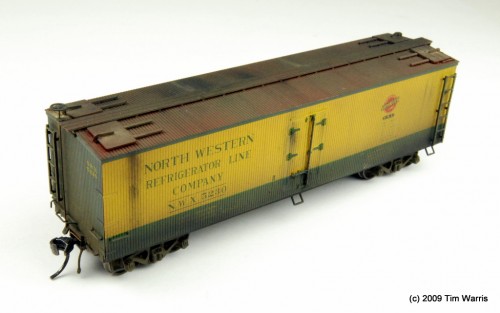
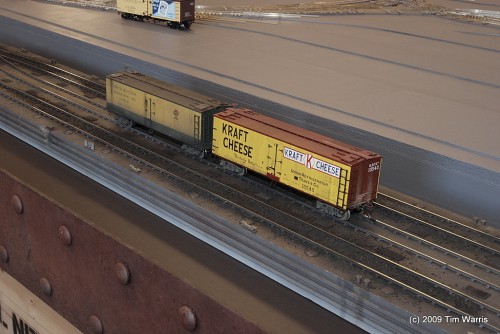
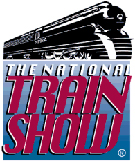
I love the old Jack Delano photographs, not many photographers made the railroads feel magical. But a great job on the reefers.
Very nice job there Tim.
One thing to bear in mind with the Delano photos is most of the selection you’ve used date from 1943, 2 years into WWII, which meant many RRs were keeping stock running for longer between attention, so it’s likely they would just get dirtier and dirtier compared with the pre- or post-war eras.
Keep up the good work.
Alan,
London, UK
Btw – Walther’s have (finally) re-issued their car-float kit.
Hey Tim, that wheel painting jig is simply great! Can I have one in N scale? Please, please, please 🙂
The weathering looks great. Do you have problems with the alcohol reacting with flat finishes? I sometimes try streaking with whitish or gray colour near the hatches to simulate the brine spill. On steel cars this causes a lot of rusting in that area. In one of the colour books of CNR reefers the author said that CNR repainted its steel reefers every four years. Anyway, I agree with you about the Branchline reefers. I love them and Jack Delano is a genius!
The reaction is usually caused by mixing rubbing alcohol with Dullcote. I don’t use Dullcote so it isn’t an issue. I find Dullcote ain’t.
Good point about the white brine streaks, I noticed them on some images as well, would be a good addition to the next batch of reefers!
PLEASE CAN YOU PASS ALONG MY NAME/E MAIL TO ANYONE MODELING THE NYCITY/BROOKLYN WATERFRONT 1955 ERA…….IM MODELING THE BUSH-BEDT/JAY STREET..
THANKS
JOEL NORMAN
And how did crews in the caboose ever communicate with the engineer and fireman, in the days when that existed?
Thanks for the pictures! A good tool for painting wheelset!
You yourself have made this device for the wheels?
Thank you!